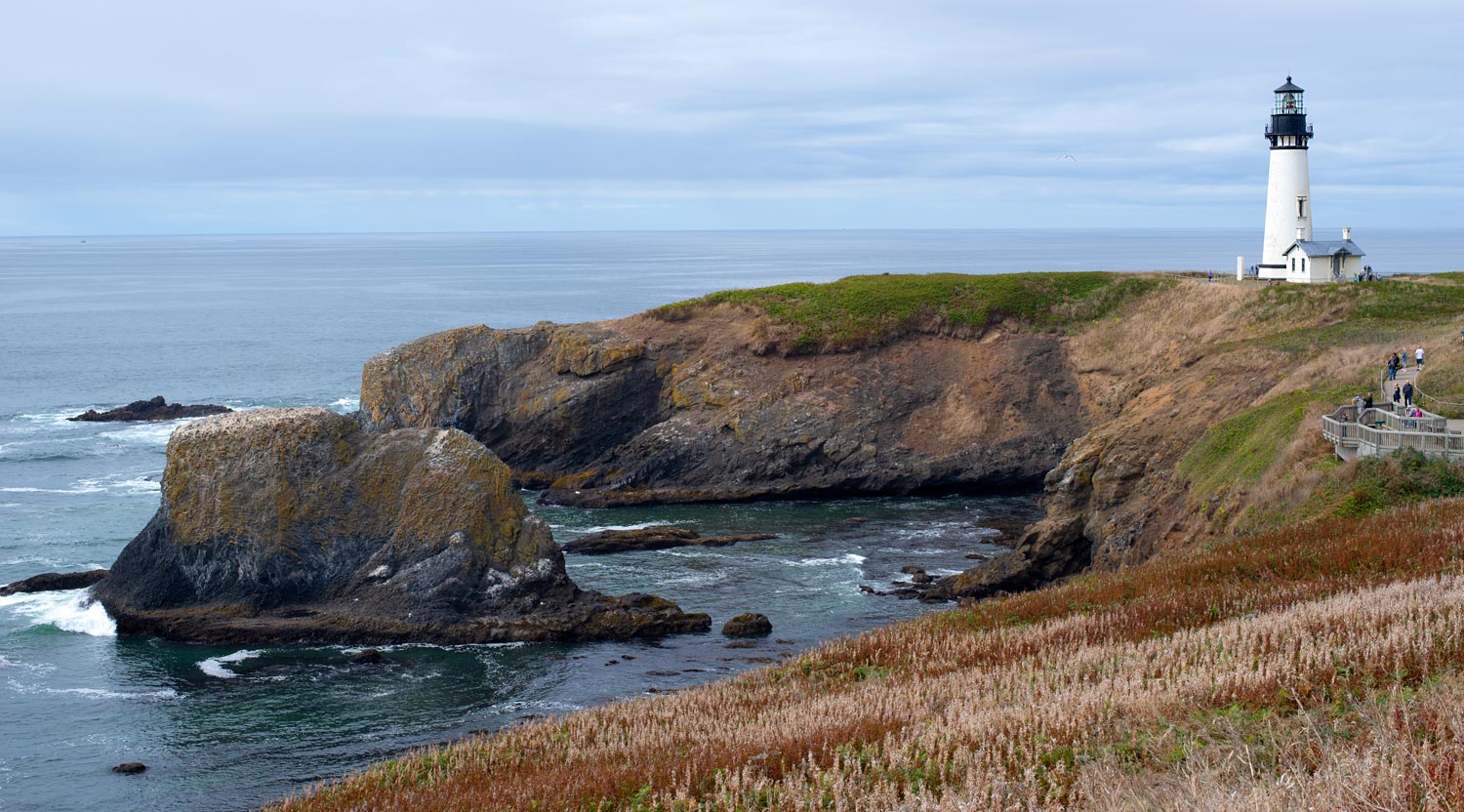Lighthouse, Tide Pools and Seals
Photos by Forrest Anderson
As a teenager, I sometimes went on coastal camping trips led by a marine biologist and his wife. They introduced me and my friends to the intriguing world of coastal tide pools, those pockets of water that remain filled when the tide goes out. I spent entire days mesmerized by sea stars, sea cucumbers, anemones and other creatures that live in the holes and crevices of tide pools.
That’s why Yaquina Head, a rocky peninsula of basalt rock that juts out into the Pacific Ocean north of Newport, Oregon, fascinates me. I'm not alone - some 400,000 people visit it annually to see its tide pools, watch seals lolling on the rocks, observe the seabird colonies through binoculars and visit the Cape Foulweather Lighthouse.
The peninsula was created by a series of lava flows that spread across Oregon and Washington millions of years ago. Dozens of species of animals and plants live at the headland, which is one of the premier places to observe tide pool life on the Pacific coast.
Oregon’s tallest lighthouse at 93 feet, the lighthouse was built in 1873 by workers who braved harsh winds and storms as well as losing to the ocean boats full of building materials. The lighthouse’s 1868 Fixed Fresnel lens lantern, which creates a light that can be seen 19 miles out to sea, is still in use. The lens was made in France and shipped to Panama, transported by land over the Isthmus of Panama and shipped on the Pacific to Oregon. Some of the parts were lost at sea on the way and had to be remade and reshipped to Yaquina Head. The lighthouse was built with no fog signal because fog is uncommon there.
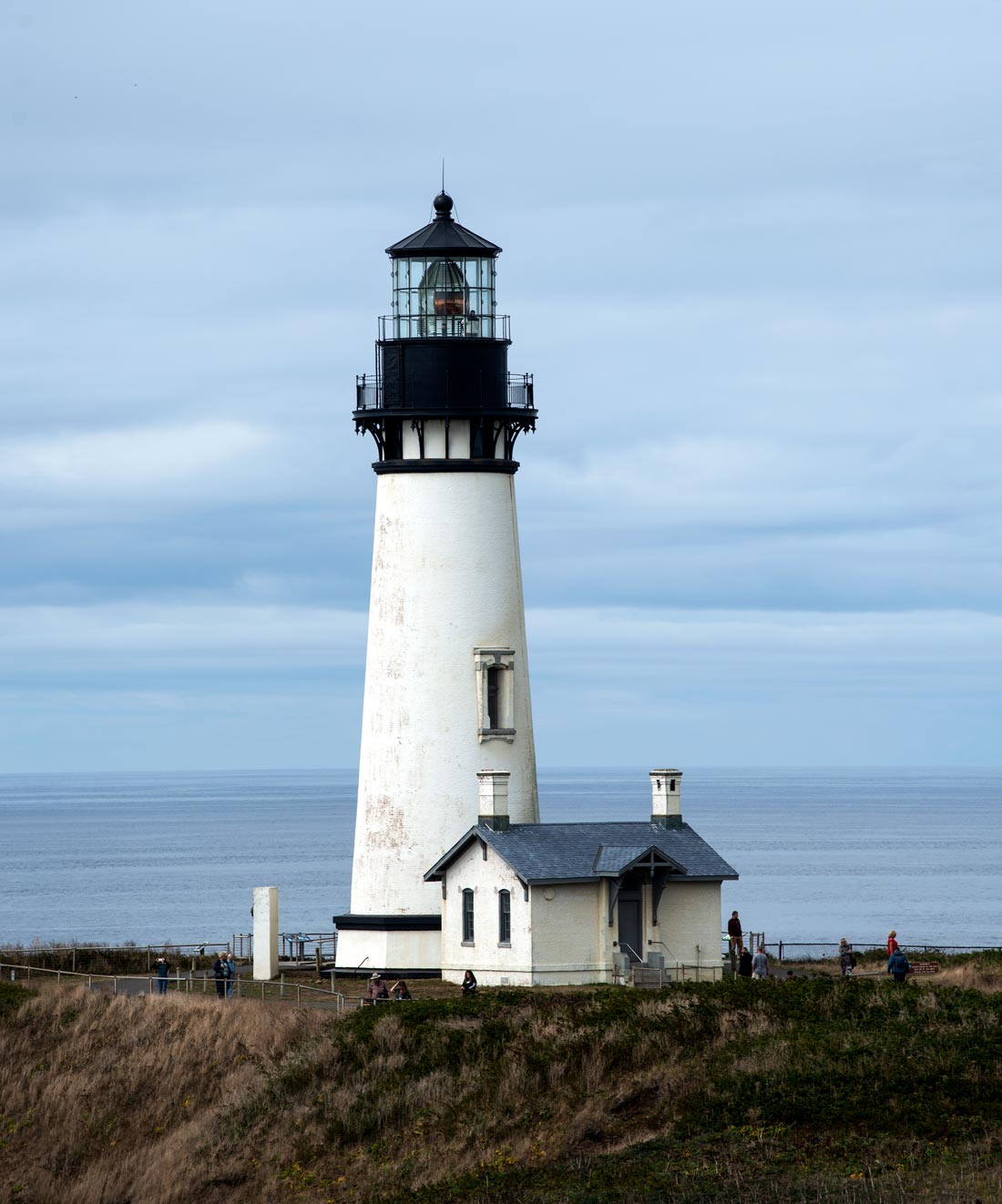
The lighthouse.
The lighthouse keepers had to grow vegetables, keep cows and raise hens to have fresh food. A high fence had to be built to keep the wind, rain and rocks from battering the buildings the keepers lived in and breaking the buildings’ windows.
The lighthouse was electrified in the early 1930s and changed from a fixed to a flashing light. The lighthouse is lit in a pattern of two seconds on, two seconds off, two seconds on and 14 seconds off. By 1938, Yaquin Head was the most visited lighthouse on the west coast and the fourth most visited in the country.
During World War II, 17 U.S. servicemen were stationed there to watch for enemy ships and submarines. The lighthouse has been the setting for a number of films and for an episode of the 1977 Nancy Drew Mysteries series called “The Mystery of Pirate’s Cove.”
How many government agencies does it take to operate a lighthouse and its natural surroundings? Quite a few. The natural area, lighthouse and interpretive center are managed by the Bureau of Land Management. The U.S. Coast Guard operates the lighthouse lantern. The U.S. Fish and Wildlife Service monitors the bird rookeries and other wildlife. The Oregon Department of Fish and Wildlife manages the intertidal animals, which is the animals in the zone where the land and sea meet and there is high and low tide. The Oregon Department of State Lands handles the intertidal lands.
The complex intertidal ecosystem of the Yaquina Head has several zones. The low tide zone is usually wet and its organisms are not well adapted to long periods of dryness or extreme temperatures. This zone hosts sea stars, sea anemones, crabs, brown seaweed and a variety of other organisms. A middle tide zone on the beach fluctuates between wet and dry twice a day when the tides go in and out. Barnacles, mussels, crabs, green algae, sea lettuce and sea palms live there. The high tide zone is wet during high tide and also has crabs, snails, anemones and sea stars. The spray zone is usually dry but can be sprayed with water. This area often has barnacles and lichens, but little vegetation.
The animals that live in the intertidal zones must adapt to huge daily changes. They can be in either very wet or very dry conditions depending on whether the tide is in or out. The turbulence of the water can carry them away, so many burrow into the sand, live under rocks or attach themselves to rocks to avoid being washed out to sea. Temperatures can range from below freezing in cold water to hot sun when the tide is out.
The salinity of tide pools also varies from the sea’s salinity to much less salty water if rain or runoff from the land dilutes the water. Tidewater animals also face a variety of predators such as foxes, people, birds and marine mammals.
The tide coming into the tide pool area brings nourishment to the creatures that live there.
Yaquina Head is a particularly fascinating coastal spot because visitors can tour the lighthouse, explore on tide pools and hike to vistas where they can see panoramic views of the ocean. They can go down to Cobble Beach, an unusual beach covered with black polished stones, via a long wooden staircase. An unusual rumbling can be heard at the beach as the water recedes through rounded rock formations into the ocean.
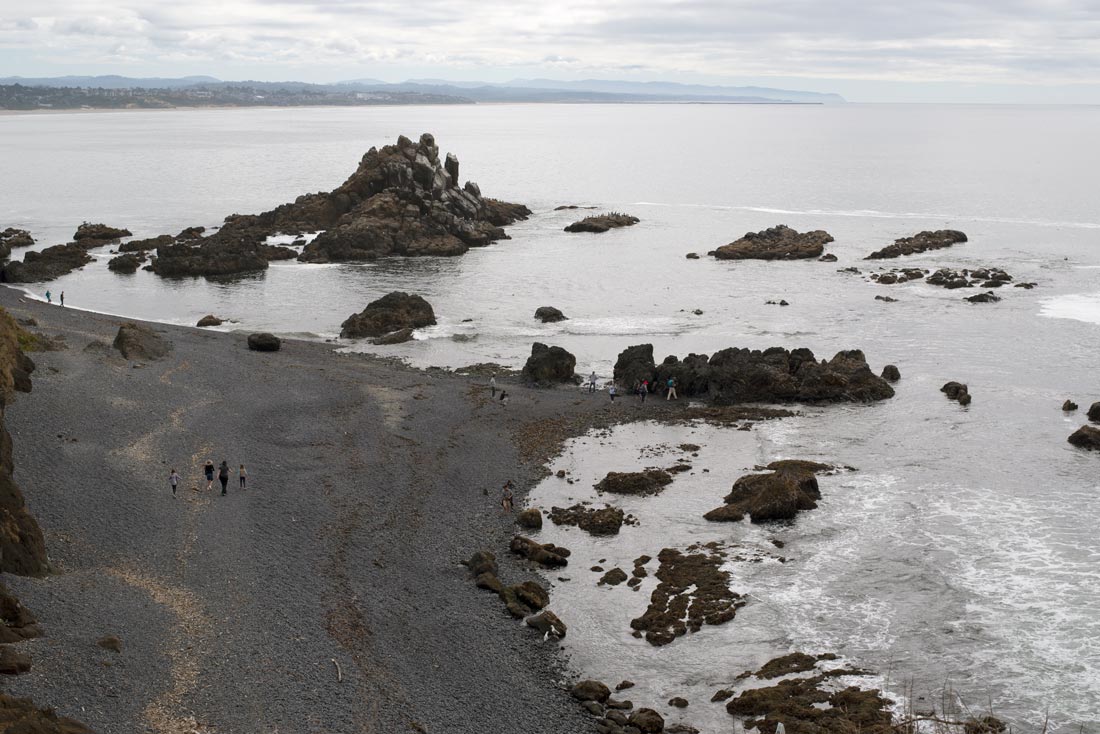
Cobble Beach.
The beach is a prime site for watching whales, seals, peregrin falcons and other seabirds. The headland supports more than 52,000 nesting seabirds of eight species and is a major breeding ground for some of them. Brandt’s cormorants average more than 800 nests per year and sometimes more than 1,500. The Common Murre breeding population includes more than 80,000 birds, making it one of the Oregon coasts’ largest breading areas. The Pelagic cormorant population averages more than 600 nests per year.
The headland area originally was an important place for Yaquina Native Americans to harvest shellfish and other seafood. In the 19th century, the small Yaquina tribe experienced huge population losses from smallpox brought to their area by Europeans in addition to being forced from their villages onto a reservation which was chosen because it was poor land. They suffered from lack of food and housing on the reservation and their villages disappeared. The remnants of the tribe joined with other tribes, so that the Yaquina lost their cultural and tribal identity. Their language is now extinct. Archaeologists have found evidence of Native American visits to the Yaquina Head area.
Yaquina Head is one of seven “marine gardens” in Oregon.
Among endangered species that come to the site are brown pelicans, peregrine falcons, bald eagles and harbor seals. The harbor seals use the area for pupping and haulout, which is the period of time when they leave the water for reproduction and rest.
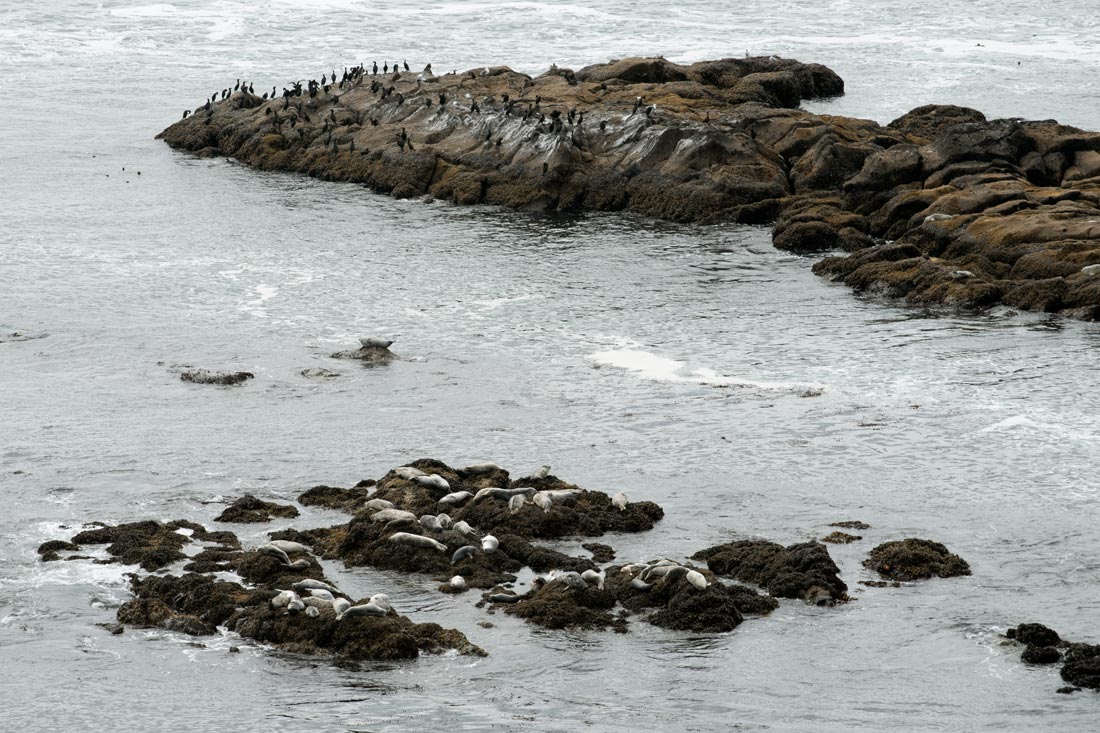
Above and below, seals and seabirds on the rocks near Cobble Beach.
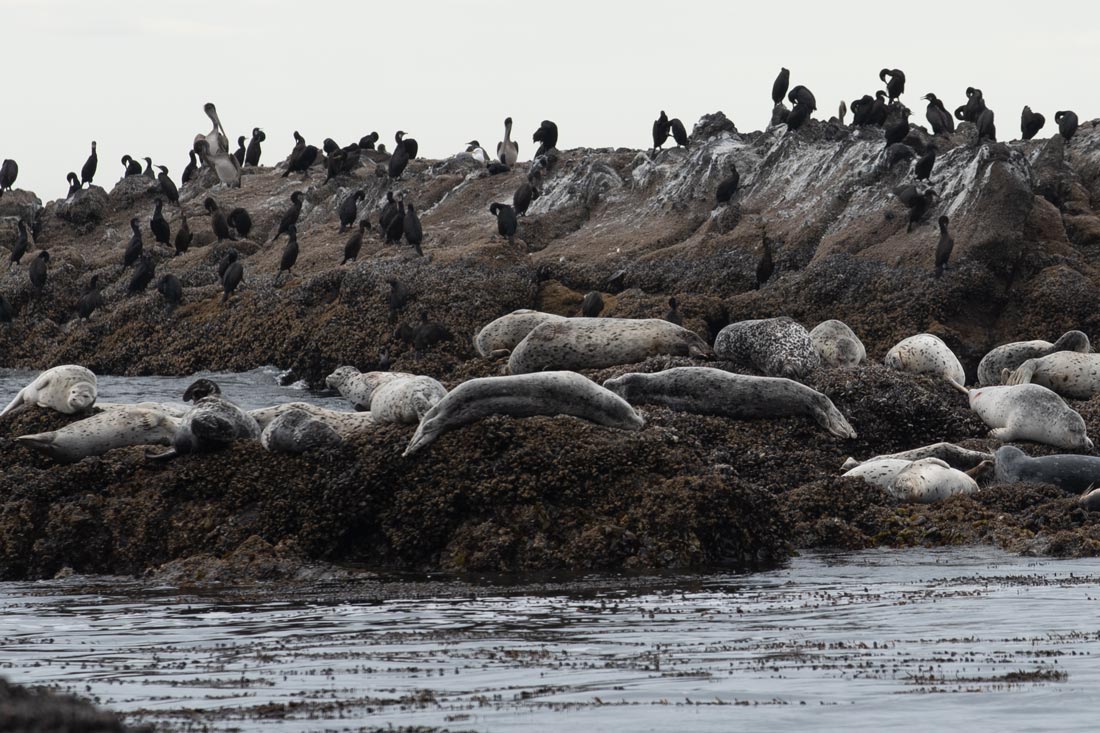
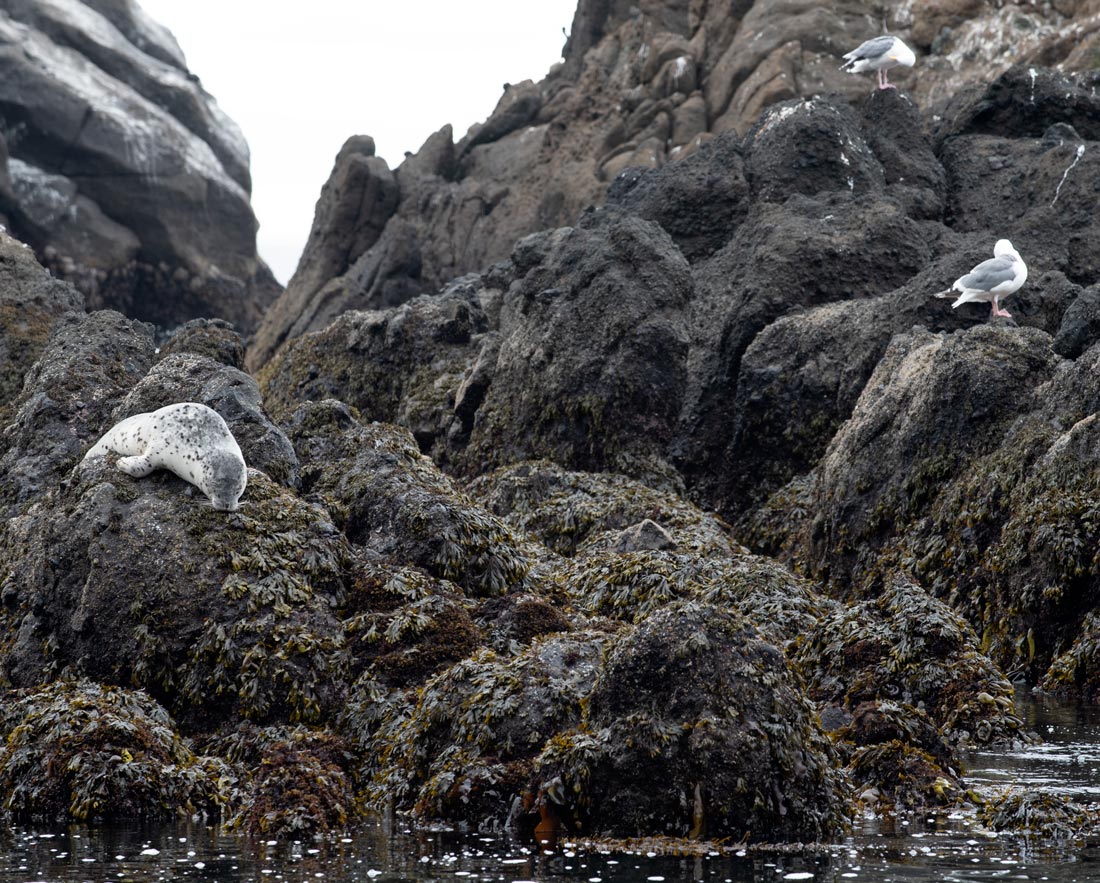
Yaquina Head is one of the best marine wildlife and ocean viewing spots on the West Coast. In spring and summer, thousands of seabirds flock to islands near the shore to breed and raise their young. Common murres and Brandt's and pelagic cormorants have large colonies there. Eagles and falcons also can be seen near the lighthouse. Yaquina is a rare closeup look at seabird breeding colonies, as they are typically remote and inaccessible to the public. The ones at Yaquina Head can be seen with a pair of binoculars between May and August.
Five seabird species and one shorebird species breed on the rocks, cliffs and headlands at Yaquina Head. Brandt’s and Pelagic cormorants nest on the rocks and cliffs. Pigeon guillemots can be seen on the water and on cliff ledges near their nest cavities. Western gulls and black oystercatchers also can be seen. Common murres gather on flat rocks near the shore.
Grey whales often pass off the outer rocks and adult harbor seals sun themselves yearround and rest with their pups in breeding season. Flocks of California brown pelicans pass overhead on the way from their breeding grounds in California and Mexico to their summer areas on the Oregon and Washington coasts. From fall to spring, Harlequin ducks, surfbirds and black turnstones rest and forage in the intertidal zone.
Seabird reproduction was reduced in several recent years because of a marine heat wave in late 2013-2016 that disrupted the ecosystem in the Pacific Northwest. This in turn affected seabird predators such as the bald eagles. Researchers closely observe the breeding colony and record the frequency, duration and consequences of loss of eggs or chicks on breeding colonies. Satellite tags are used to track the movements of individual murres during and after the breeding season. In 2017, there were no visible signs of successful common murre breeding - the third year in sixteen that the main sub-colonies failed.
Last September, the government announced that a mass of warm water again was building off the west coast. Temperatures were three or more degrees above what they should be. The warmer water increases the metabolic demands on fish so they get fewer nutrients from their prey while working harder to catch it. This affects the entire food chain. Marine heat waves have doubled in frequency since 1982 and are increasing in intensity.
The ocean off the coast of Oregon also has experienced the effects of increasing absorption of CO2, which causes acidification of the water. The problems have affected Oregon shellfish growers, causing mass losses of oyster larvae. Water that is too acidic prevents marine organisms such as oysters from building shell.
A variety of different species of whales and purpoises, sea lions, seals, and dozens of varieties of fish have been seen at the site.
Low tides reveals colorful urchins, sea stars, anemones and aquatic plants.
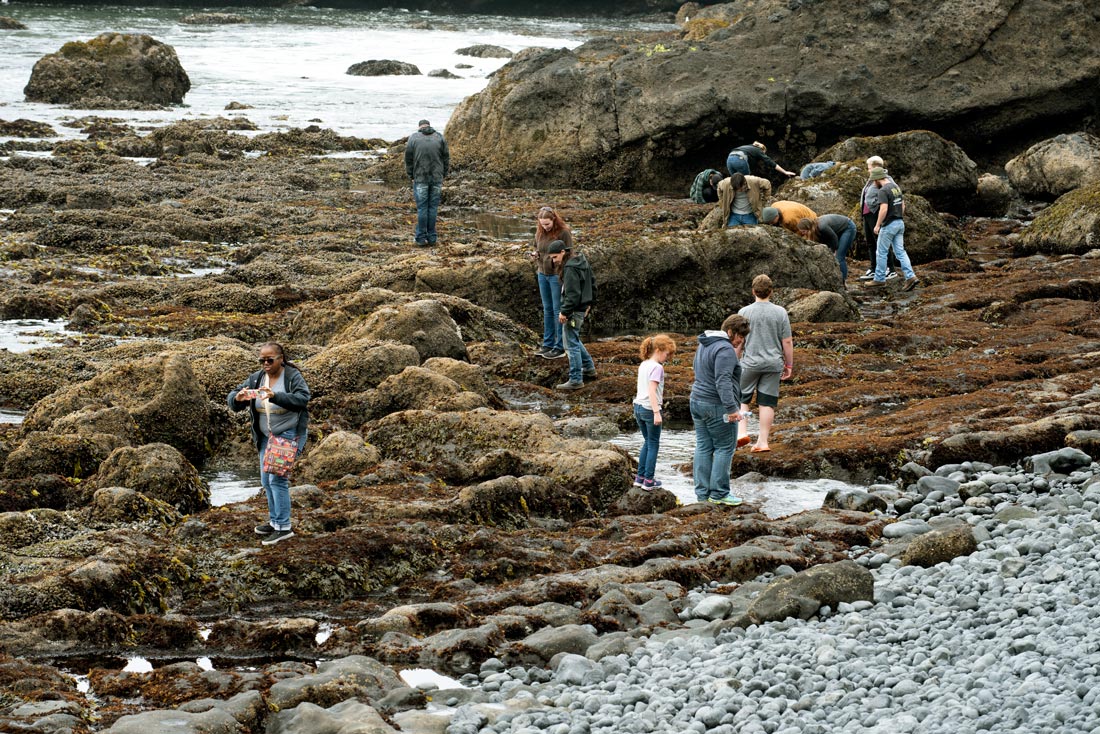
This picture and several below show the tide pools.
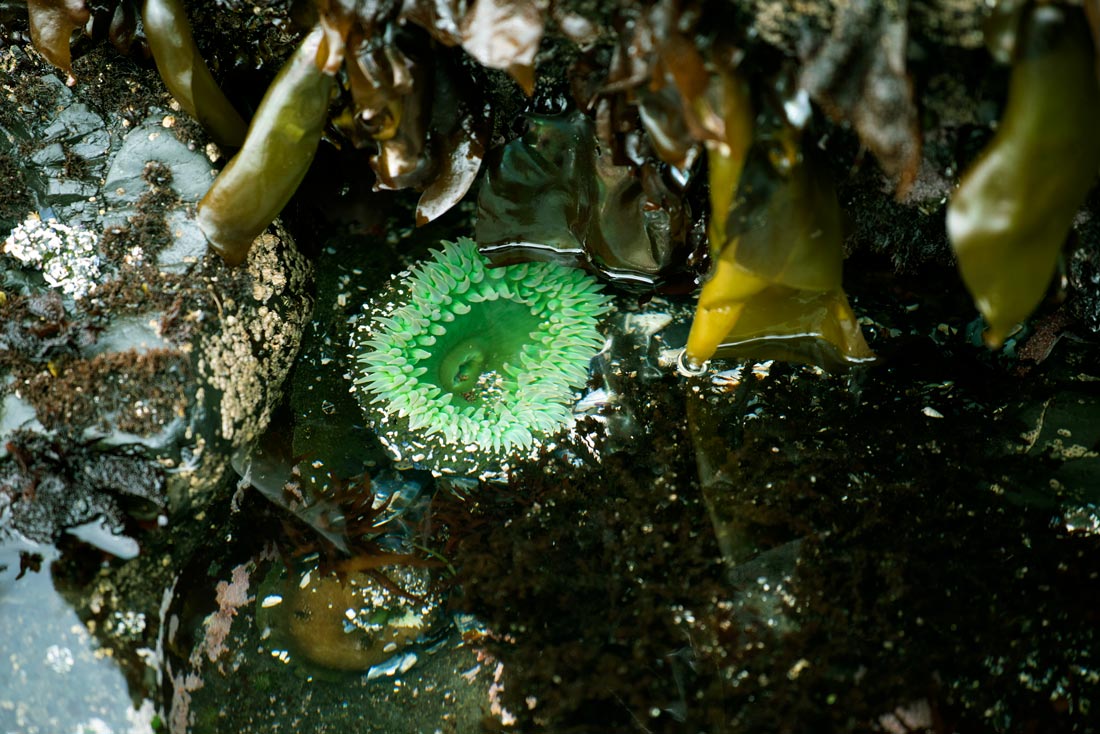

Collection of intertidal shellfish and marine invertebrates is prohibited at the site and BLM staff monitor visitors to prevent collection. There are restrictions on access to bird and mammal breeding areas and seasonal closures of areas where animals haul out and nest. Rangers at the site answer questions and allow visitors to handle selected shells of some animals.

Visitors are allowed to photograph but not touch the creatures in the tidepools.
At least eight different species of sponges have been seen at Yaquina Head. Jelly fish and seven types of anemone have been found there in addition to mussels, clams, scallops, snails, slugs, squid, shrimp, sea urchins, sea cucumbers, a variety of sea stars and 19 types of worms. Barnacles of different kinds are attached to the rocks in large numbers.

Barnacles on the rocks at Cobble Beach.
The BLM has a marine lab in Newport that conducts research and monitors the wildlife population at Yaquina Head.
Check out these related items

California’s Sea Monsters
In fall and winter, tens of thousands of elephant seals make a migration to California's coastal rockeries to breed and give birth.
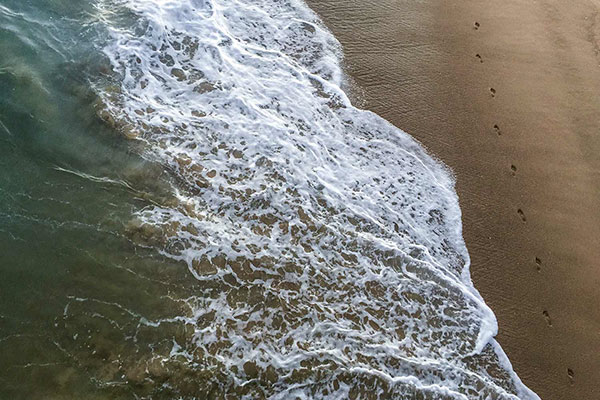
Salt Water Cure, Change of Scene
Changes in the air, the light and the sounds all add up to a new perspective.
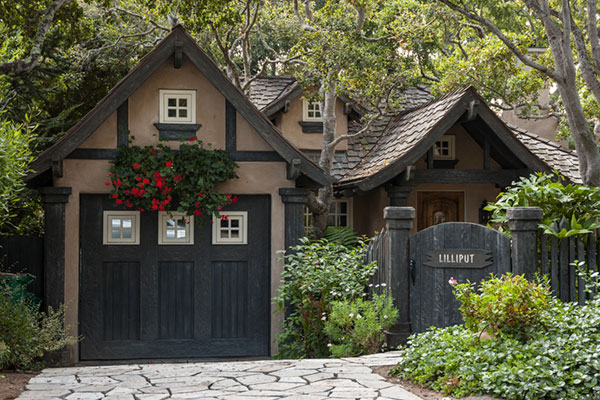
Why Isn’t Every Town Like Carmel?
Carmel, California, demonstrates how design, planning and environmentalism can enhance a small town.

Pizza on a Scale of One-to-Ken
If you're lucky enough to live in Portland, try Ken Forkish’s restaurant, Ken's Artisan Pizza. If not, try his great recipes.
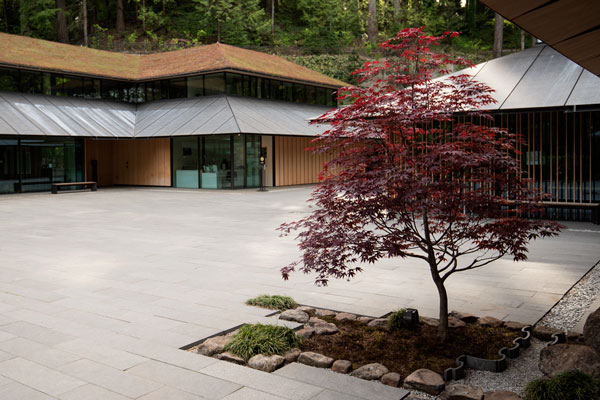
Japanese Design Past and Present
Architect Kengo Kuma's village at the Portland Japanese Garden blends modern architecture with traditional Japanese design.

Bookstore You Want to Move Into
Powell's City of Books in Portland is a magnet for book lovers, a place to immerse themselves in the marvelous world of books.
